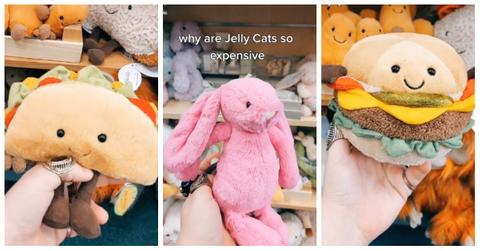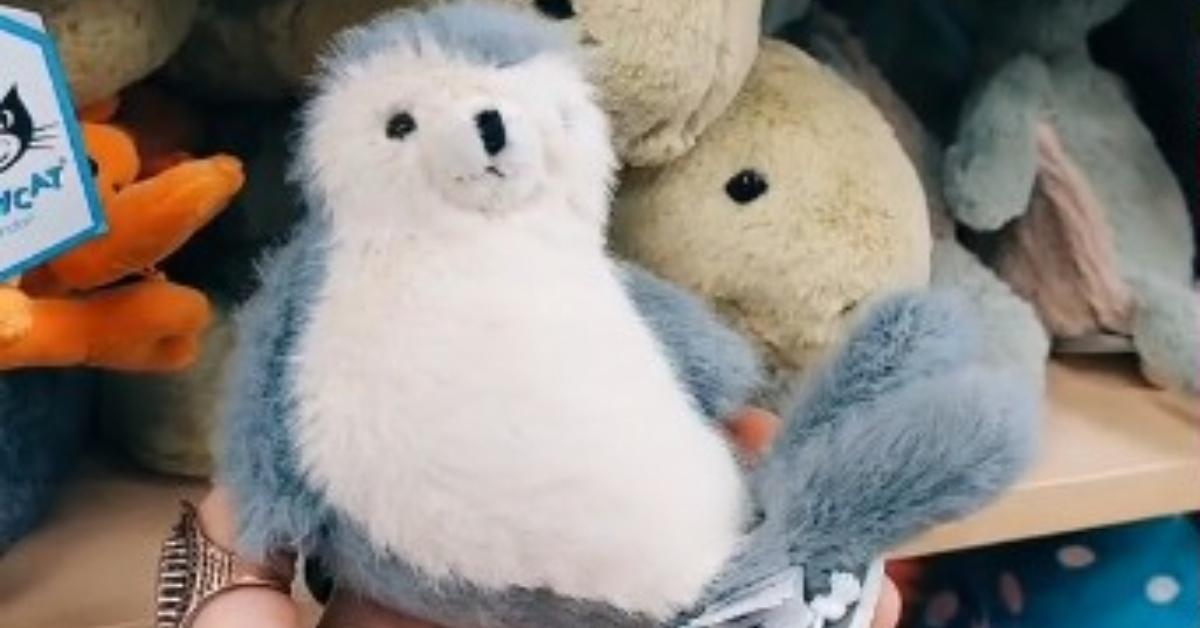Why Are Jellycats So Expensive? The Scoop Behind the Plushies That Replaced Beanie Babies
There are plenty of quality plush companies that don't charge the $20 to $75 (and up!) that Jellycat charges.
Published March 27 2025, 3:06 p.m. ET
Picture this: You're a kid or collector in 1995, and there's a craze sweeping the world. The craze? Beanie Babies. Either you've already heard of them, or you can't imagine what you're in for with a deep dive into the phenomenon that these little plush creatures grew into.
For Gen Z, Gen Alpha, and collectors in 2025, this is what Jellycats have become.
The Jellycats craze has likewise swept the world, with little collectible plushes once again becoming the center of a consumer firestorm. But why are they so expensive? Here's what we know about why Jellycats cost so much, and how Jellycats became the new Beanie Babies.
Why are Jellycats so expensive?!
The brand itself is particularly evocative: Jellycat. On the Jellycat website, the story of the company's founding is part myth, part fact. But in 1999, the brand launched in London. With a focus on unique and quality products that tell a different story to every different customer, the Jellycat brand quickly became a "must-have" for those who like to stay on top of collectibles.
However, there are plenty of quality plush companies that don't charge the $20 to $75 (and up!) that Jellycat charges.
And there's a very good reason why the plushies are so pricy: It's all about the heart. Not only are they focused on sustainable products, but they also care about human welfare.
According to the company's Modern Slave Statement, they have chosen to take a hit in the pocketbook in favor of fair labor practices and ensuring that they aren't building a brand on the back of enslaved people or exploited workers.
This means that from concept on through to the consumer, Jellycat products are monitored to ensure that both the components of the product and the production means are all fair and equitable for those involved in creating them.
It drives prices up because the products and labor are costlier, and the monitoring to ensure the process isn't free, but it means that you can feel good about the product in your hands. It's a refreshing departure from the norm in a capitalistic-heavy consumer market.
Why are people so darn obsessed with Jellycats, anyway?
And just in case you didn't know, the company promises to release approximately 200 new products every year.
That's not exactly a cheap concept, but it has allowed them to step into the impressive shoes left behind in the wake of the Beanie Baby craze.
Part of what made Beanie Babies so appealing was that they were unique and varied, and they came in limited-edition runs.
With Jellycats, you won't face the same consumer crazes that Beanie Babies sparked but the same unique and creative product base is a major driving force in their popularity.
Goss.ie editor Kendra Becker also muses that the very feel of Jellycat products, often described as the "softest plush you'll ever touch," is part of their appeal. There's no doubt that social media has been a huge driving force in the rise of Jellycat. After all, all you have to do to get thousands of views is show a rare or new Jellycat.
All in all, Jellycat is like a new, eco- and human rights-conscious version of Beanie Babies.
With Gen Z and Gen Alpha driving new innovations in sustainability and human rights issues, Jellycat seems to have stumbled upon a "right product, right time" perfect combination.
Even if they weren't doing everything right from the point of view of a company who cares about the right things, they have a product that many think is good enough to be worth the hype.

